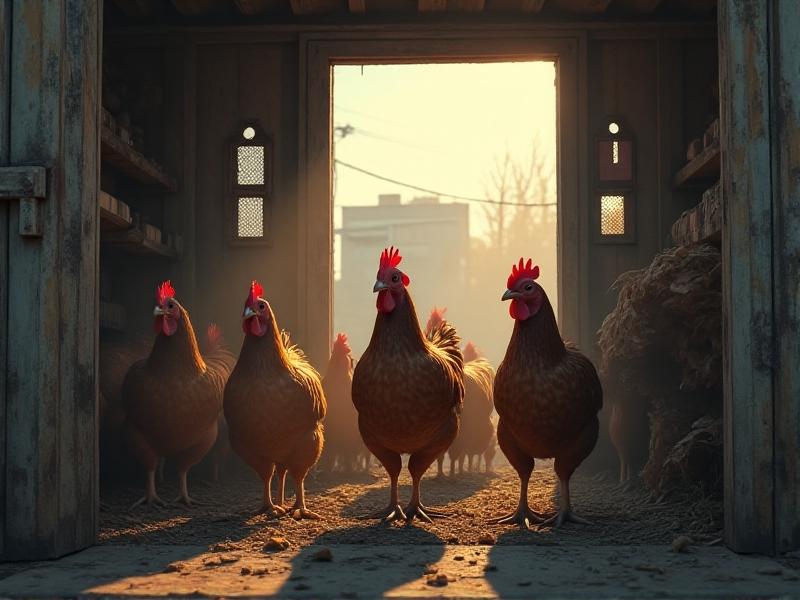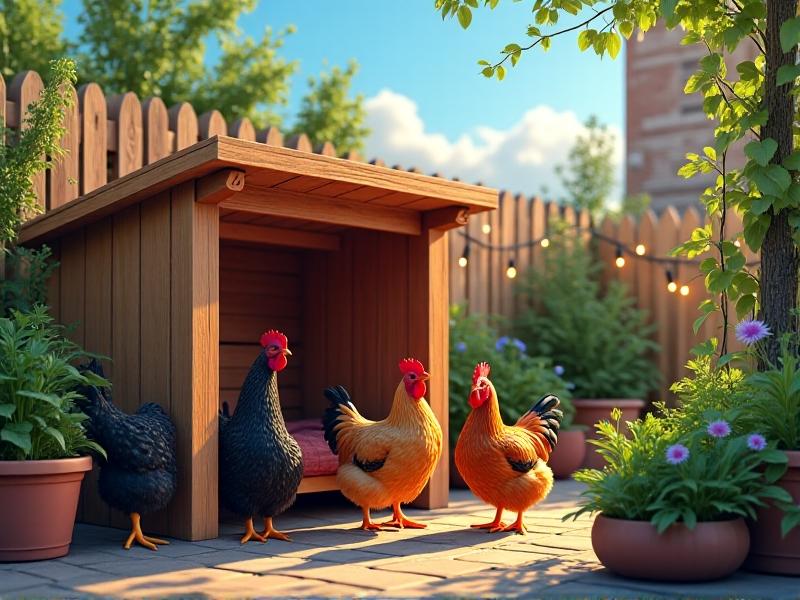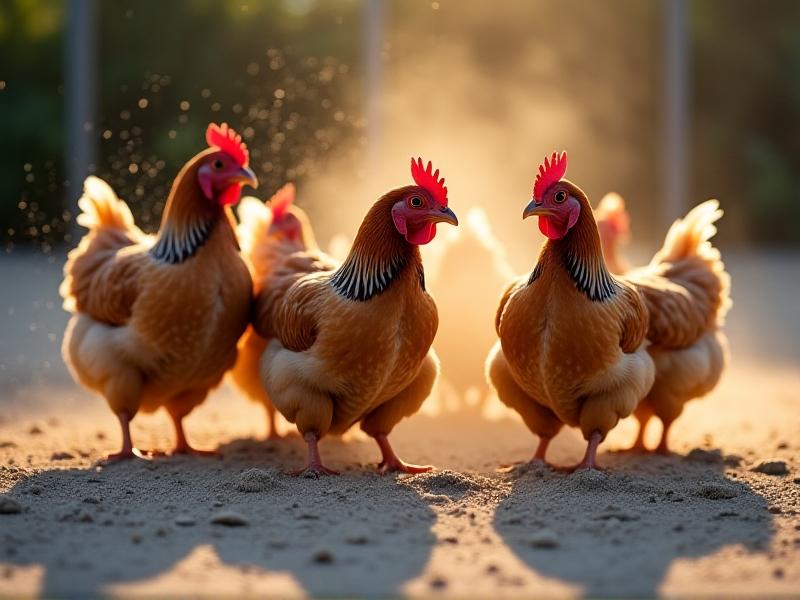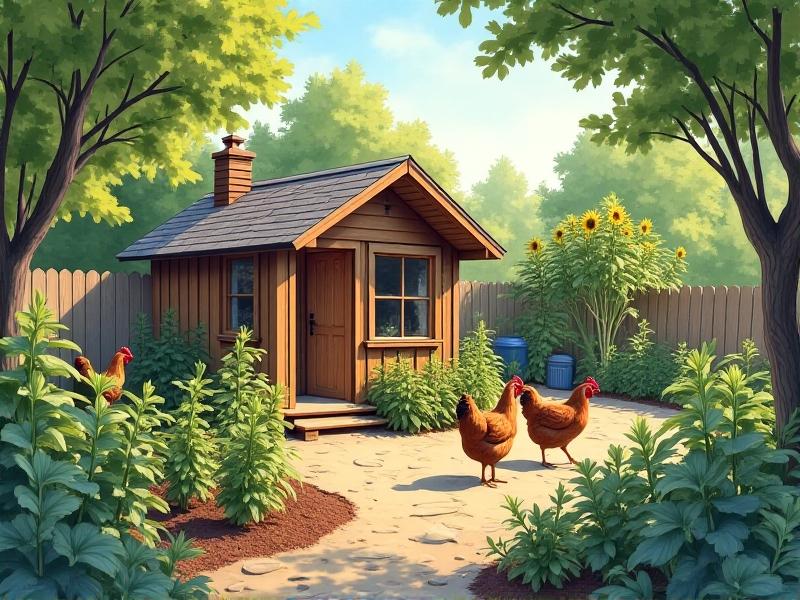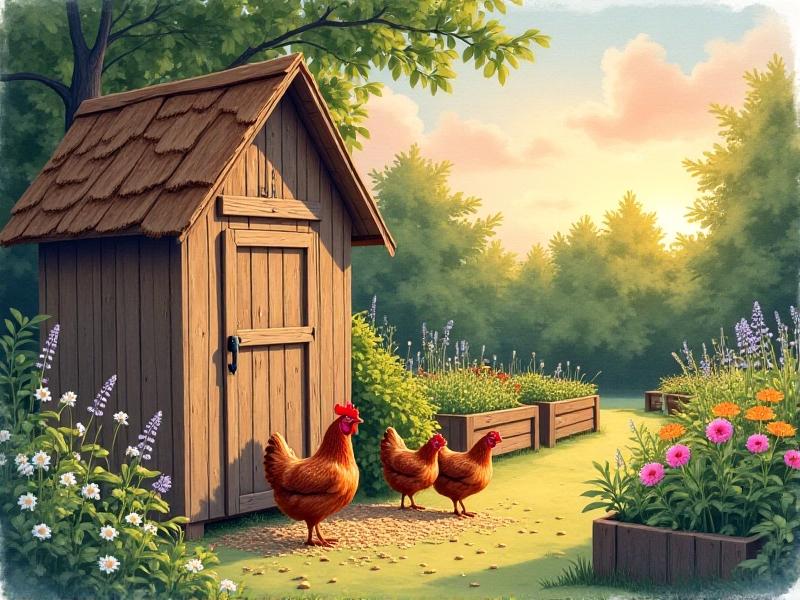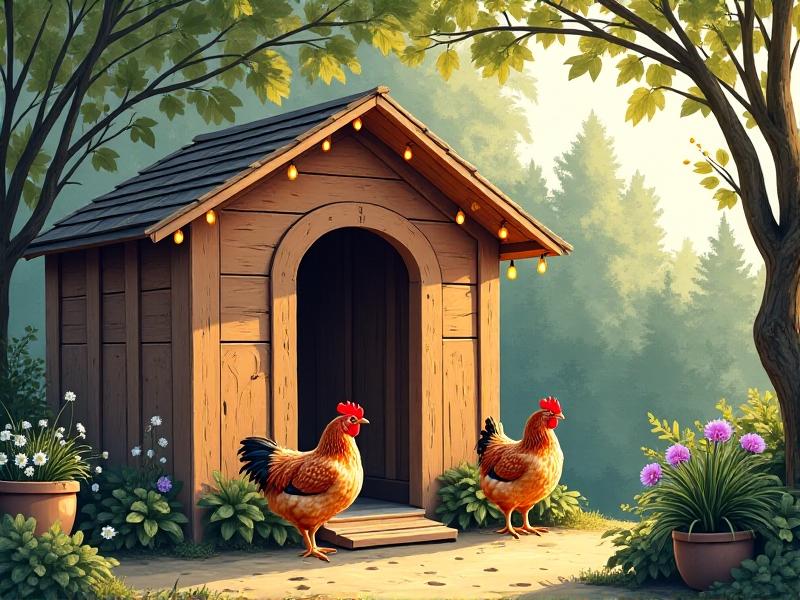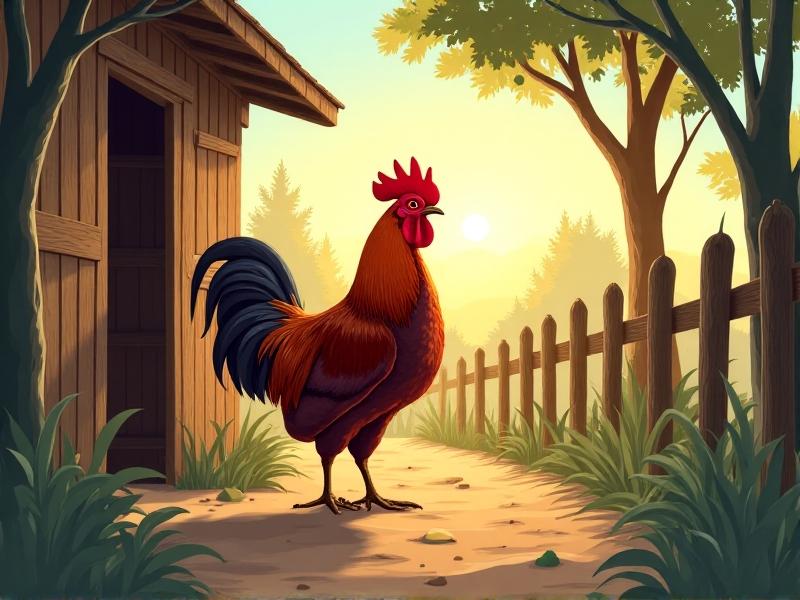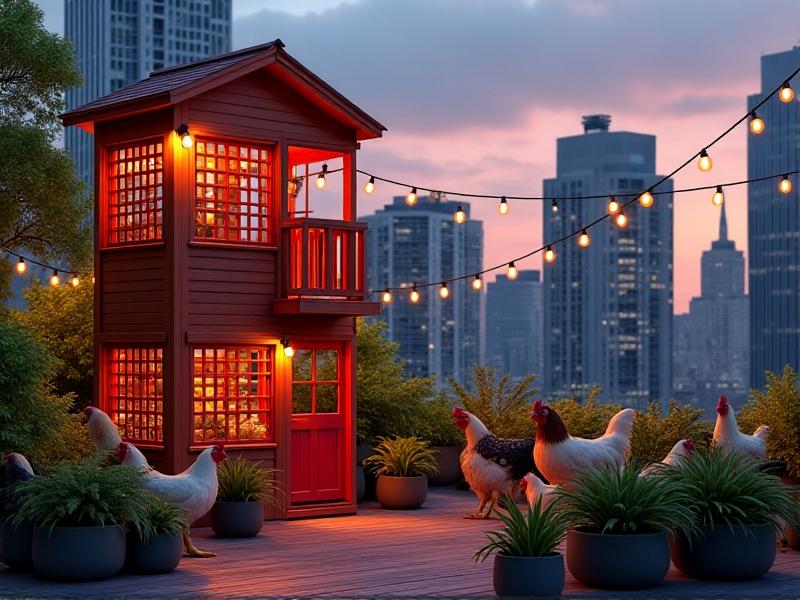Companion Planting: Chicken-Safe Gardens for Small Yards
Understanding Companion Planting and Its Benefits

Companion planting is the practice of growing specific plants together to enhance growth, deter pests, and improve yields. This method leverages natural relationships between species—like marigolds repelling nematodes near tomatoes or basil boosting the flavor of peppers. For chicken owners, integrating this strategy into small-yard gardens offers dual benefits: creating a thriving ecosystem while ensuring plants are safe for curious, foraging birds. By selecting the right combinations, gardeners can reduce reliance on chemical pesticides and fertilizers, fostering a healthier environment for both plants and poultry.
In small spaces, every square foot counts. Companion planting maximizes efficiency by pairing plants with complementary needs. Tall crops like sunflowers provide shade for lettuce, while shallow-rooted herbs such as thyme protect soil moisture for deeper-rooted vegetables. Chickens contribute by eating pests and scratching the soil, but their presence requires careful plant selection to avoid toxicity. Balancing these elements transforms limited space into a productive, chicken-friendly haven.
Why Integrate Chickens into Your Garden Ecosystem?

Chickens are natural garden allies. Their scratching behavior aerates soil, their droppings add nitrogen-rich fertilizer, and their appetite for insects like slugs and beetles reduces pest populations. However, unrestricted access can lead to trampled plants or overforaging. The key is designing a space where chickens and plants coexist symbiotically. For example, allowing birds to roam designated areas after harvest clears pests and weeds while preparing beds for new plantings.
In small yards, rotational grazing systems or movable pens (chicken tractors) help manage their impact. Planting hardy, chicken-resistant species like rosemary or lavender along borders creates natural barriers. This integration not only boosts garden health but also enriches chickens’ diets with fresh greens and insects, improving their egg quality and overall well-being.
Selecting Chicken-Safe Plants for Small Spaces
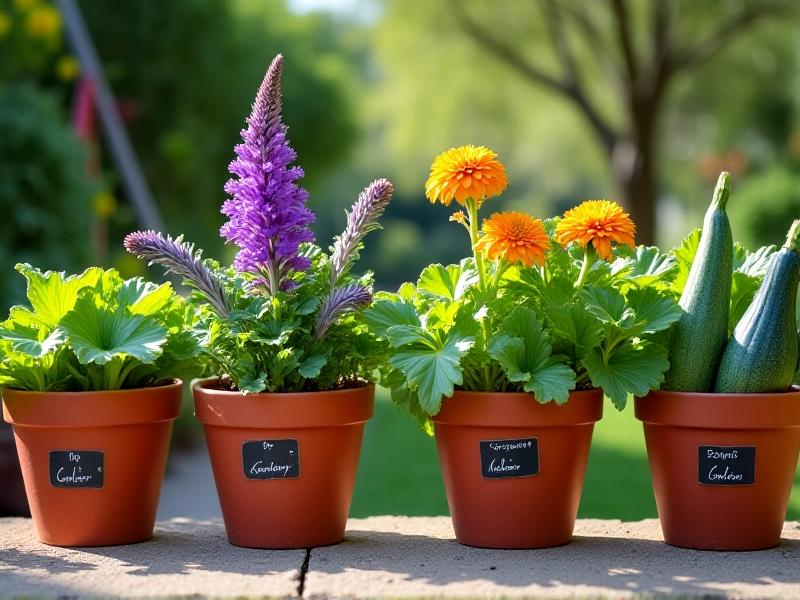
When choosing plants, prioritize non-toxic varieties that withstand occasional pecking. Leafy greens like kale, spinach, and Swiss chard are nutrient-dense options that chickens enjoy but rarely overeat. Herbs such as oregano, mint, and parsley repel pests while remaining safe for birds. Edible flowers like nasturtiums and calendula add color, attract pollinators, and serve as supplemental chicken feed.
Avoid plants from the nightshade family (e.g., unripe tomatoes, eggplant leaves) and ornamentals like foxglove or lilies, which are toxic to poultry. Dwarf fruit trees or berry bushes in containers provide shade and treats without overwhelming limited space. Always research plant toxicity through resources like the ASPCA’s animal-safe database before introducing new species.
Designing a Functional Layout for Chickens and Crops
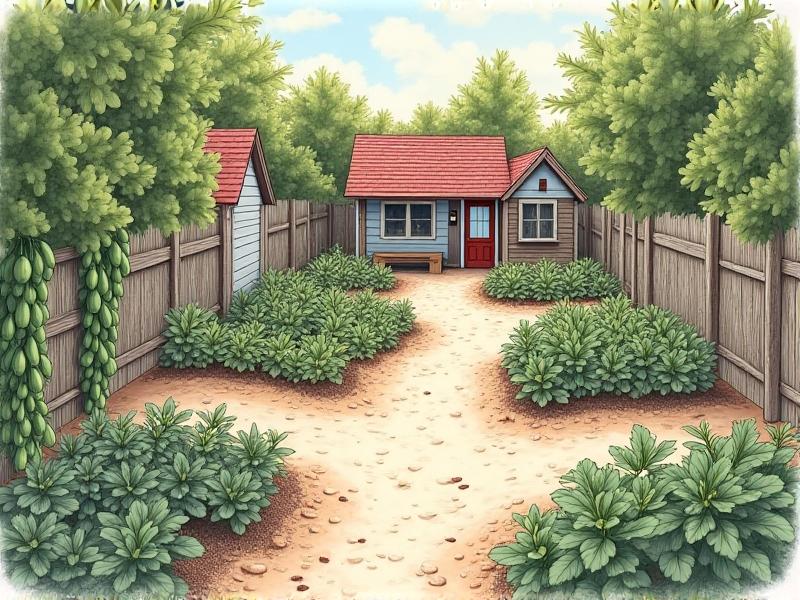
Start by zoning your yard: dedicate areas for chicken activities (coop, dust baths) and separate them from delicate crops using low fences or raised beds. Vertical gardening saves space—train peas, beans, or cucumbers on trellises that double as shade structures. Incorporate hardy ground covers like clover between beds; chickens snack on the leaves while the roots fix nitrogen in the soil.
Use movable barriers like chicken wire or temporary fencing to rotate access. For example, let birds patrol a finished squash bed in fall to eat pests, then close it off when planting spring greens. Incorporate perches or stumps to divert chickens from seedlings, and mulch heavily around plants to discourage scratching.
Companion Plants That Benefit Chickens Directly
Certain plants serve as dual-purpose forage and garden allies. Comfrey’s deep roots mine nutrients, and its leaves (when dried) make a mineral-rich supplement for chickens. Sunflowers provide seeds for birds and support climbing beans. Planting a “chicken salad bar” patch with kale, mustard greens, and borage ensures fresh snacks while keeping birds away from more vulnerable crops.
Medicinal herbs like thyme (antiparasitic) and lavender (calming) can be grown in hanging baskets or along coop borders. Chickens instinctively self-medicate by nibbling these plants, promoting flock health. Avoid overplanting single species; diversity mimics natural ecosystems and prevents overgrazing.
Maintaining Balance: Tips for Ongoing Success
Regularly rotate crops and chicken grazing areas to prevent soil depletion and pest buildup. Cover crops like buckwheat or rye in fallow beds add organic matter and suppress weeds. Monitor plant health—chewed leaves may signal overenthusiastic hens, requiring temporary barriers or additional distractions like hanging cabbage heads.
Compost chicken manure for 6 months before applying it to beds to avoid burning plants. Provide supplemental grit and oyster shells near feeding stations to deter chickens from digging in garden beds for minerals. A small, dedicated dust bath area with sand and wood ash keeps hens occupied and reduces unwanted scratching elsewhere.
Common Plants to Avoid in Chicken-Accessible Gardens
Many common garden plants pose risks to poultry. Nightshades (tomato leaves, raw potatoes), members of the onion family, and ornamentals like azaleas or rhododendrons contain toxins that can cause respiratory distress or organ damage. Rhubarb leaves are high in oxalic acid, while avocado pits and skins contain persin, which is fatal to birds.
Research regional invasive species too—pokeweed and jimsonweed often volunteer in gardens and are highly toxic. When in doubt, use the Cornell University poultry poison database or consult local agricultural extensions. Create physical barriers or elevated planters for questionable species, and educate household members about risks.
Case Study: A Suburban Backyard Transformation
The Johnson family transformed their 1/8-acre lot into a productive chicken-garden hub. They divided the space into zones: a 4x8’ coop run, three 4x4’ raised beds, and a central pollinator strip. Companion planting included garlic around roses (deterring aphids) and nasturtiums cascading over bed edges to repel squash bugs. Chickens free-range in the run daily, with weekly supervised garden tours to devour pests.
By year two, the garden supplied 70% of their vegetables and 18 eggs weekly. Key lessons included using hardware cloth to protect seedlings and planting sacrificial bok choy to distract birds from lettuce. Their success shows that even tiny yards can harmonize poultry and plants with thoughtful design.
